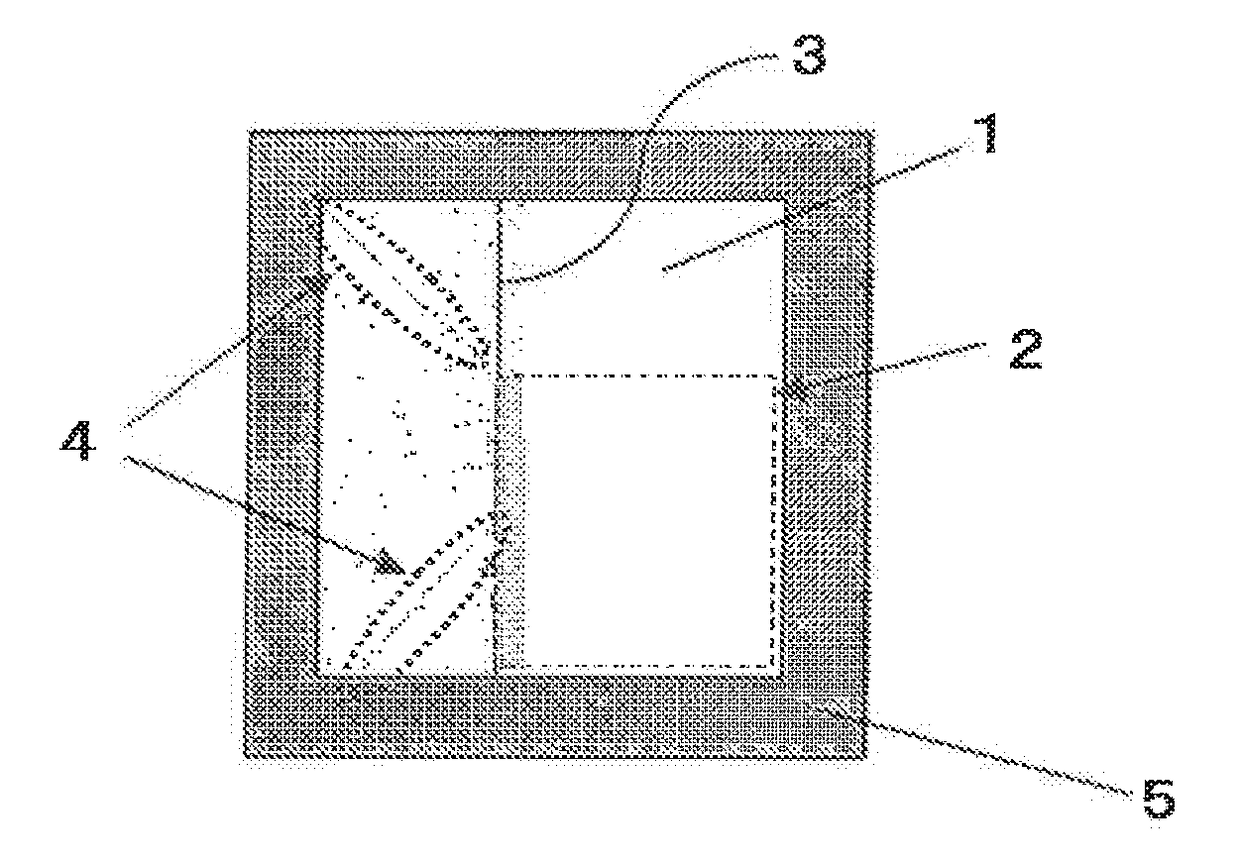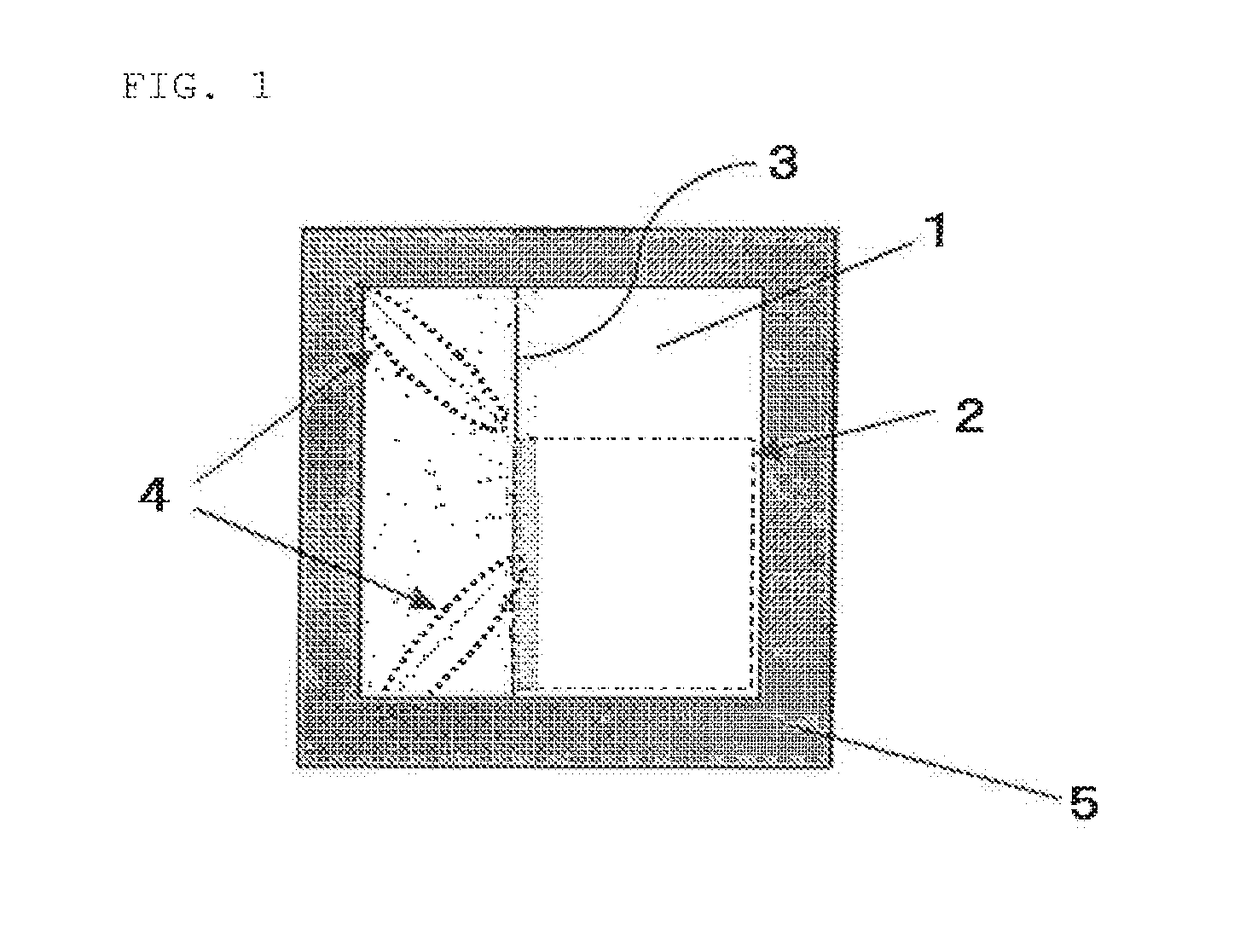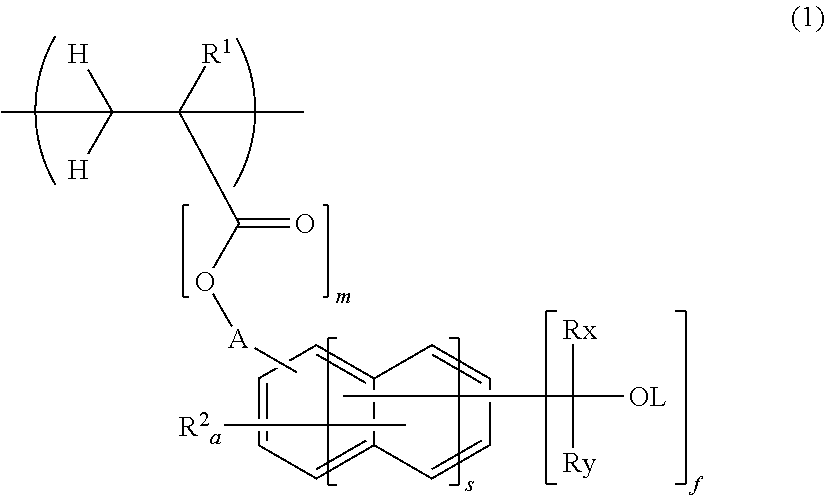Polymer compound, negative resist composition, laminate, patterning process, and compound
a negative resist composition and polymer compound technology, applied in the field of polymer compound and negative resist composition, can solve the problems of reducing the yield of semiconductor devices, reducing the solubility of polymer compound in resist solvent, and avoiding the occurrence of defects
- Summary
- Abstract
- Description
- Claims
- Application Information
AI Technical Summary
Benefits of technology
Problems solved by technology
Method used
Image
Examples
synthesis example 1
[Synthesis Example 1] Synthesis of Monomer
Synthesis of 4-(1-hydroxy-2,2-dimethyl-1-propyl)styrene
[0135]
[0136]Under a nitrogen atmosphere, a 3-L four-necked flask was charged with 31.1 g of magnesium and 50 mL of THF, and a solution in which 177 g of chlorostyrene has been dissolved in 300 mL of THF was added dropwise thereto at room temperature over 1 hour. The mixture was heated to 40° C. and then stirred for 3 hours to prepare a Grignard reagent. The obtained Grignard reagent was cooled in an ice-bath, and a solution in which 79.3 g of pivalaldehyde has been dissolved in 200 mL of THF was added dropwise thereto over 1 hour. After stirring overnight, 15 mass % ammonium chloride aqueous solution (1,000 g) was added dropwise to terminate the reaction. The product was then subjected to a usual aqueous post-treatment (aqueous work-up) and purified by distillation to obtain 184 g of the intended compound, 4-(l-hydroxy-2,2-dimethyl-1-propyl)styrene (yield: 76%). This compound satisfies t...
synthesis example 2
[Synthesis Example 2] Synthesis of Polymer Compound (Polymer)
[0140]Polymer compounds (polymers) used for preparing negative resist compositions were synthesized in the following manner.
synthesis example 2-1
[Synthesis Example 2-1] Synthesis of Polymer 1
[0141]Under a nitrogen atmosphere, a 500-mL dropping cylinder was charged with 117 g of a PGMEA solution containing 50.0 wt % 4-hydroxystyrene, 4.99 g of acenaphthylene, 23.4 g of 4-(1-hydroxy-1-phenylmethyl)styrene, 12.9 g of triphenylsulfonium-1,1,3,3,3-pentafluoro-2-methacryloyloxypropane-1-sulfonate, 12.1 g of dimethyl-2,2′-azobis-(2-methylpropionate) (Product name: V-601, available from Wako Pure Chemical Industries, Ltd.), and as solvents, 67 g of γ-butyrolactone and 26 g of PGMEA to prepare a solution. Further, another 1000-mL flask for polymerization under a nitrogen atmosphere was charged with 78 g of γ-butyrolactone, and the above-prepared solution was added dropwise thereto over 4 hours under heating at 80° C. After completion of dropwise addition, the solution was stirred for 18 hours while the polymerization temperature was maintained at 80° C., followed by cooling to room temperature. The obtained polymerization solution wa...
PUM
| Property | Measurement | Unit |
|---|---|---|
| wavelength | aaaaa | aaaaa |
| time | aaaaa | aaaaa |
| energy | aaaaa | aaaaa |
Abstract
Description
Claims
Application Information
 Login to View More
Login to View More - R&D
- Intellectual Property
- Life Sciences
- Materials
- Tech Scout
- Unparalleled Data Quality
- Higher Quality Content
- 60% Fewer Hallucinations
Browse by: Latest US Patents, China's latest patents, Technical Efficacy Thesaurus, Application Domain, Technology Topic, Popular Technical Reports.
© 2025 PatSnap. All rights reserved.Legal|Privacy policy|Modern Slavery Act Transparency Statement|Sitemap|About US| Contact US: help@patsnap.com



